

diana
Members-
Posts
290 -
Joined
-
Last visited
Everything posted by diana
-
This is the last one. I let it grow. See attatched photos. This is exacly why I hate boletes! I thought this one would be easy. I don't even bother with the red capped ones, except for b floridanus which I do feel confident identifying. It's a mutant. I don't know. Bolete filter for occurring in FL + yellow flesh dns, the only result is Suillus. We are in rainy season and have had a crapload of rain this past week. Not at all viscid. Went onto Mushroom Observer and looked at all the boletes found in the past year. I'd say going by ther looks pictures alone I would guess belonging to the xanthoconium family. Other characteristics noticed, has been growing as twins often. Mycelium of indeterminate color attached. Pores are indented at stem and do stain a dark color maybe brown. Flesh is a nice texture, firm and not buggy. Stem is thick and pretty even going down. It stains with handling – right away. While the stem is smooth and velvety it does have dots that are not raised at all. Taste is mild with maybe acidic undertones but that could be my imagination. Certainly NOT bitter.
-
There are still a few growing under the tree, I'll keep an eye on them. The ones in the photos - the caps are about 2.5" across. Picked a one more this evening that is about 4". My eyes don't work so well this late in the day I'll check tomorrow to see if the pores are "stuffed". Not too clear on what that means exactly. 😐
-
It's been awhile..... Found a few pretty boletes growing under a loquat tree in the yard. Russet potato brown cap, very solid. Cap velvet smooth and very domed. Pores almost nonexisitant and no depth but a dijon mustard color. Flesh the color of the yolk of a hard boiled egg (store bought not from yard chickens) Jeez, is it getting close to lunch time?? Also, no evidence of bugs at all. Flesh not bitter. Oh, the stem discolors from handling, flesh does not stain. Pores don't actually stain but are easily marked but I think that's just from my fingernail. Smells nutty.
-
Thanks Dave!!! I'm going with G. Phaeocyanescens. I used the Bolete Filter and I was stumped. Thought for sure it would be an easy ID but just made myself crazy(er). I didn't even give this one a consideration since the photo wasn't even close. Turns the notes on the Bolete Filter state that the pic doesn't belong with the description. Well, uh.... A google image search of phaeocyanescens is dead nuts. You're the best!
-
Cap light brown/tan surface looks scaly or furry but isn't. Pores white and tiny, dns, tubes 3/8" long. Stem not hollow but at base looks like it wants to become that way. Inside of stem is easy to brush away - if I rub my finger on the stem meat it rolls up and falls out. Cap flesh white and solid, not bitter. Nothing seems to stain except the outermost surface does darken when cut giving a sort of outline. That in itself would seem to be a tell but I could find no mention of this as a feature. Spore print in progress
-
We just had a burst of honeys here (Tampa area) during last week of May through first week of June.
-
Just found my first wood ears last week!
-
I too thought they may be centipedes or millipedes. Picture shows them much closer than I actually inspected. Kinda got the creeps. They were a solid group on the pores originally with several dangling off the stipe (the reason first thought that came to me was mycelium) and squirming
-
Found a couple boletes to take home and try to id. At first glance I thought it had purple mycelium. What? Then I noticed that the pore surface had a mat of purple worms. Was no longer interested in identifying the bolete but am curious about the worms. Didn't have my phone with me so I took it home in a dog poo bag (unused). Lost most of the worms in the bag but here is a picture of what remained.
-
Very reticulated but only on the top section of stem. Not evident in pic but white pores do not stain. Flesh white, bitter.
-
LOL, this is Florida. Everything is gritty/sandy!
-
These are creamy, brie like.
-
We have discussed the sour gold pored variety of auriporus and I have become quite sure (and happy) of that one when I do find it. I did narrow it down to probable auriorus but that's as far as I got. Some other possibilities and all were not good/edible.
-
Thanks, was making double sure. The only time I have found and ate a puffball was the gem studded.
-
-
Rainy season is on time this year and the boletes are everywhere. If only I could identify any of them. I thought this one would be easy since it does not stain and that is rare with any that I find. Brown well rounded cap about 2in. Pores yellow and dense, tubes 3/8 inch, stem thin and yellow, flesh cream to pale yellow. Does not have much scent or much taste. Ammonia on cap turns it a bit deeper brown (no flash of another color) flesh not affected. y
-
I made the mistake of drying oysters in the house once. That has been the ONLY time that they have smelled like seafood (fresh smell like ironing linen to me). The whole house smelled. I've had good luck cooking and then freezing to be used in recipes later.
-
looks to be oysters to me
-
not old red russulas. Went back and while the pictures did not turn out I did find one that had not opened and was the same soft pink.
-
Saw a group of gorgous mushrooms that had they been orange I would call the color of a creamscicle. If you made a creamscicle with raspberries instead you could probably reach the color of this mushroom. Large, 4 to 6 inches across. Even though they may have been on the way out even the gills were remarkable. Looked like a petticoat, (no, I'm not THAT old}. I'm going to call them Russula Hixsonii even though they are said to be rare. Am I correct with this id?
-
I think I am going to call this one Boletus oliveisporus. While the discription does not mention the cap flesh turning red the picture on the bolete filter is dead on and further reading does mention a sterile edge which one found today has. While mushroom expert says that it grows with pine I am certain that the ones I found were with oak. Found some today and they were with oak also the cap flesh turned red then lost the red quickly. Mushroom expert does say that they are hard to tell apart from Boletus pulverulentus. One is edible the other is not. Not worth the risk to me, today's find is below
-
Howard - I'll have to check out the leccinellum varities when and if I find any more. I didn't notice any scabers but sometimes I overlook things. Also, it is stated that these stain red slowly and the ones I found stained red instantly. Actually stained so fast I couldn't be sure of the flesh being white or yellow. Dave - these were found near oaks and hickory, possibly sweetgum. We have pretty much the same trees as up north... With exception of the conifers, we do have a few in the pine family but not the beautiful abundance and selection that you guys have. We do have some palms which I have found support the gilled boletes. At first I thought this was a freak occurrence but have found this too often to dismiss as an oddity. Things are really popping here now and I have to be careful to not get overwhelmed.
-
Didn't find any mature ones as it is really hit and miss here. I never find big patches of single varitey mushrooms except for oysters. Here is a picture of one that is slightly older though may be going to having the fungus. The other day I checked mushroom observer and no one had been finding anything similar in Fl recently. Today I see that something akin is showing up , Pulchroboletus rubicitrius. Could this be a match?
-
The shineyness of the cap does suggest Suillus and hints to viscid when wet characteristic..
-
Love it! What did you use to get the winter woods onto it? A finger? ooops, already answered. In my excitement I jumped the gun.

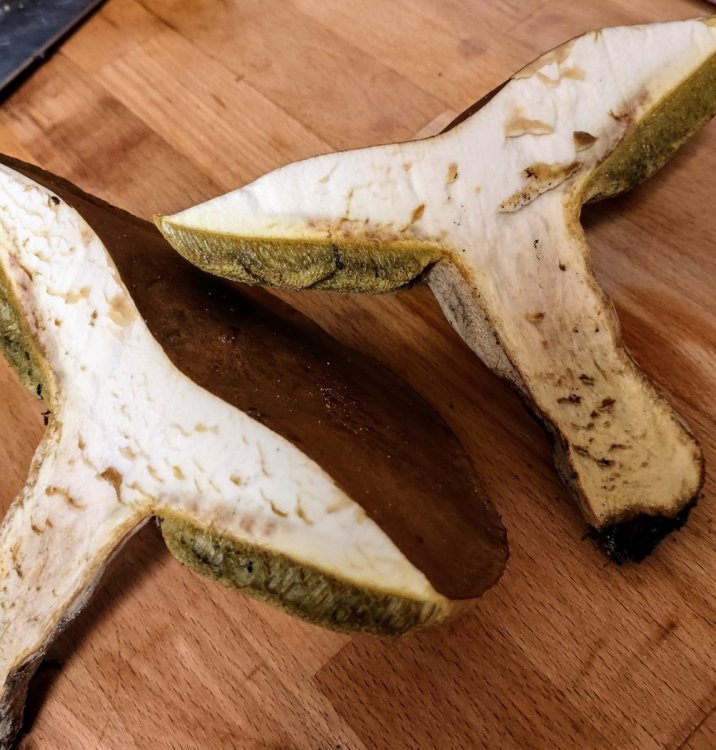

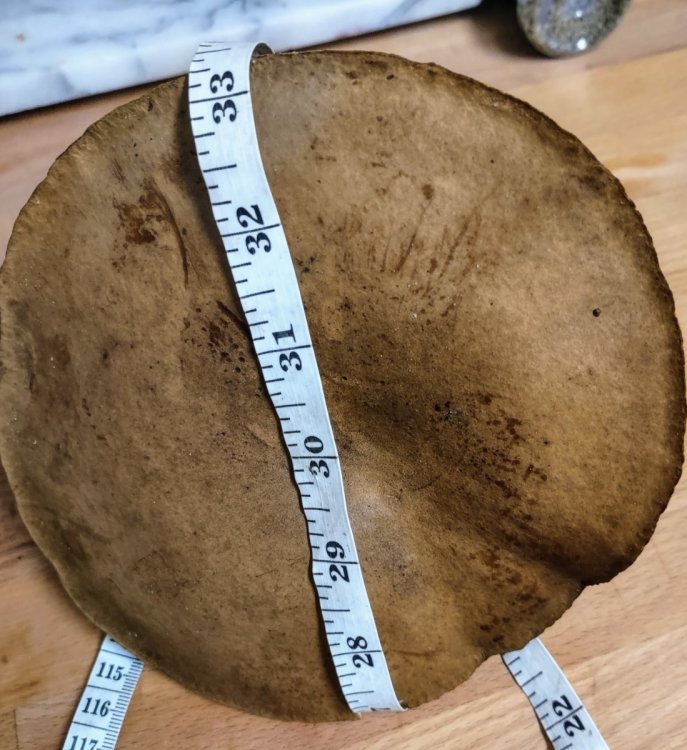
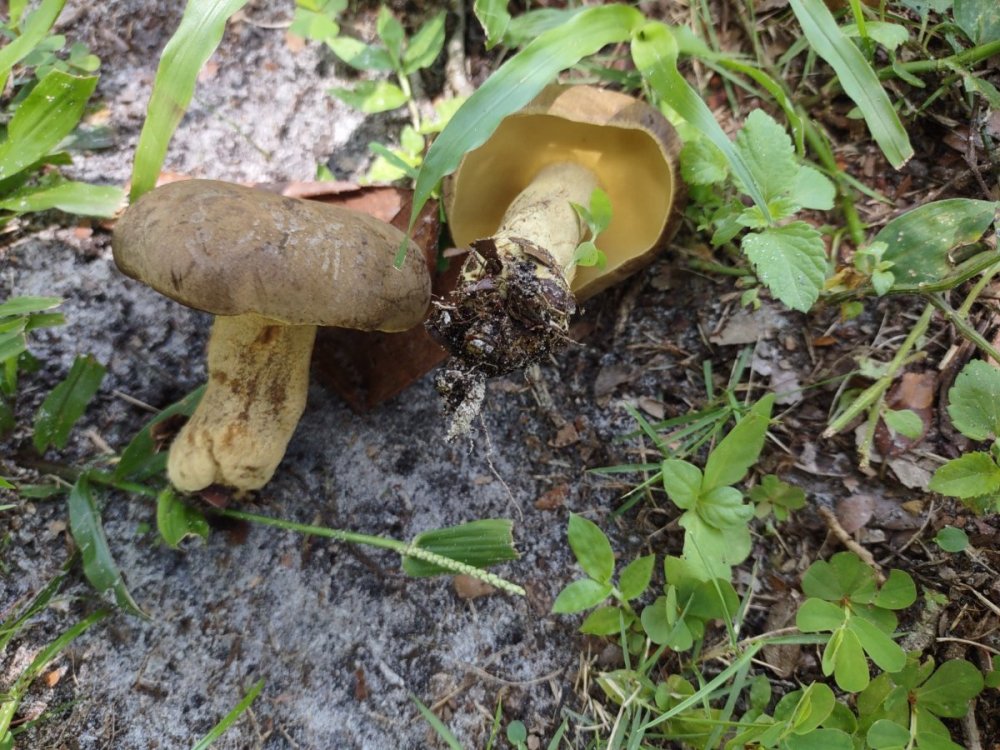
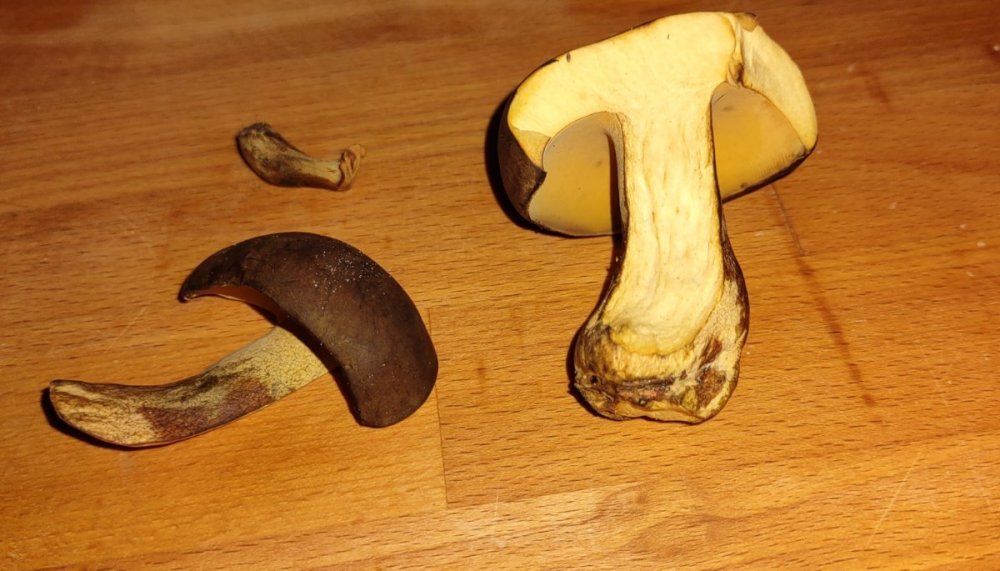



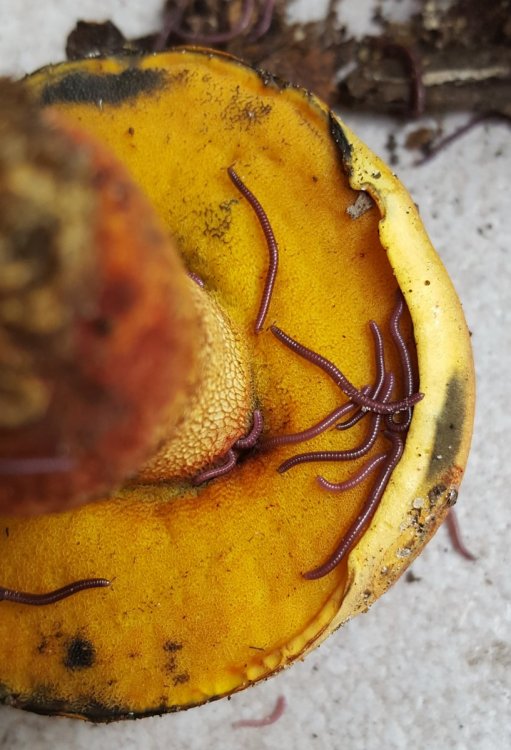
.thumb.jpg.4d772e6ae23ab8545cb986ef325df343.jpg)



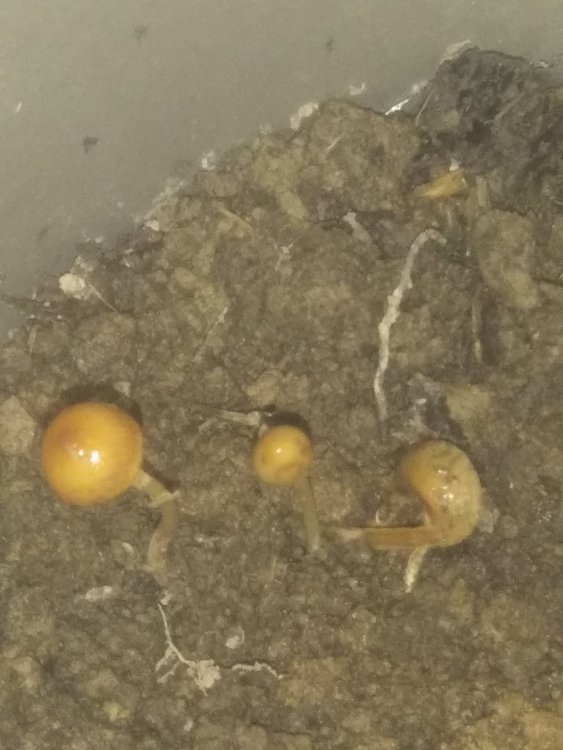

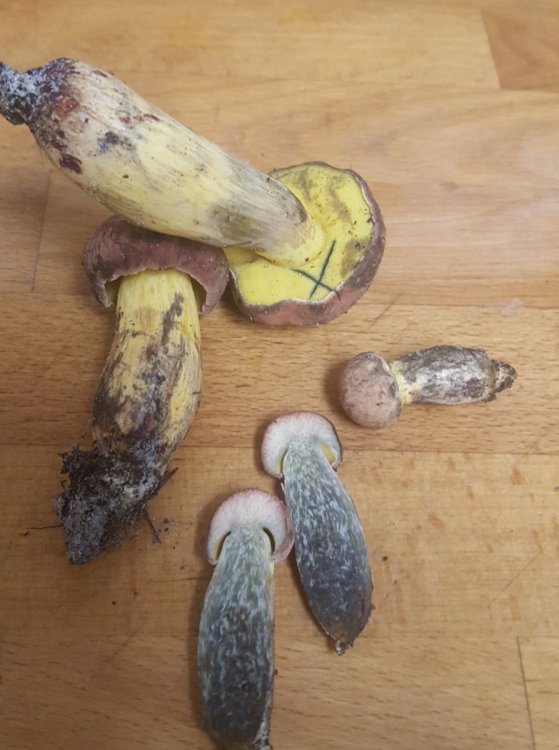
.thumb.jpg.96e4838249bba31d978575a506042c0b.jpg)
.thumb.jpg.6887abe62d72865628ac3b0048549cc2.jpg)